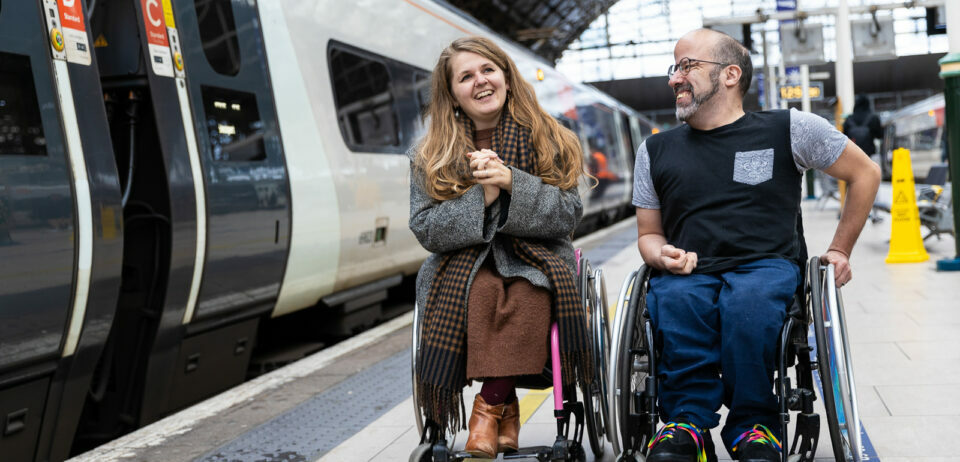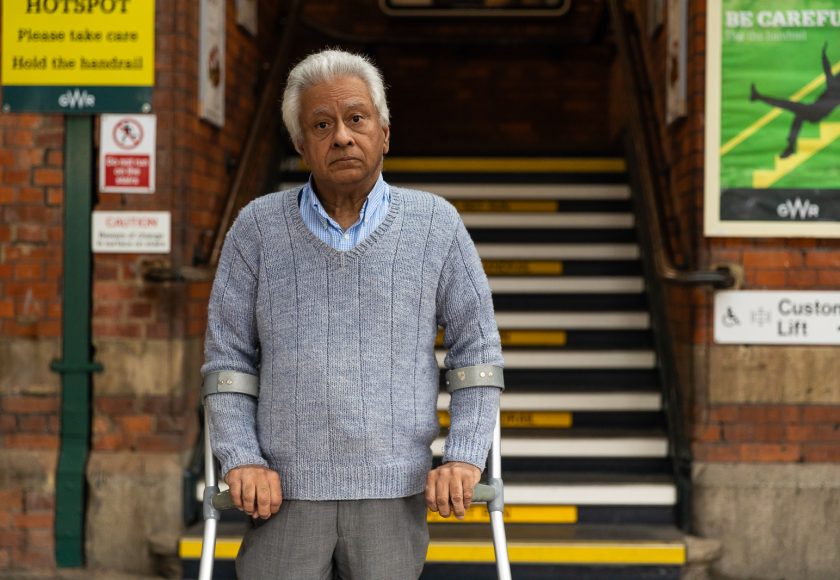
Policy background
The National Travel Survey 2021 found that people with a ‘mobility difficulty’ made on average 2 rail trips per year, as opposed to 14 trips per year completed for the average person with ‘no mobility difficulty’ (Department for Transport).
Due to the inaccessibility of rail infrastructure, many disabled people rely upon staff assistance to travel by train. However, operators can decide how to deploy staff, with few regulatory conditions.
- Only 11% of stations are staffed at all times, with a further 45% staffed only part-time. (DPTAC)
- In the year ending March 2023, just 81% of pre-booked Passenger Assistance requests resulted in all assistance being received. This means almost 1 in 5 assistance requests were unsuccessful. (Office for Rail and Road)
- A 2022 audit found that only half of disabled participants were able to successfully receive assistance from Help Points. The other half were prevented from doing so by a number of barriers, such as the points being out of reach, broken, or otherwise inaccessible (Office for Rail and Road)
- An accessibility feature that would enable some disabled people to travel independently is Level Boarding (train floors level with platform). Just 2% train stations have level boarding. (DPTAC) There is no National standardised height for train platforms meaning rolling stock continues to be purchased with different floor heights.
Barriers
- 1 in 4
- mainline train stations have step-free access
- 2%
- of stations have level boarding (train floors level with platform)
- 67%
- stations have platform(s) which are too narrow for wheelchairs to turn
- 40%
- of mainline rail stations have no tactile paving
65% of respondents reported that they could not afford to use trains as and when they needed to, suggesting train travel is prohibitively expensive. This makes cost the most common barrier to train travel. Infrastructure barriers can also drive up the price: people told us how their nearest station was inaccessible to them, requiring them to pay for a longer journey to get to a station that they can board from.
22% of respondents said they face additional barriers when booking or paying for tickets. A lack of staff assistance was a key factor in this, with several respondents saying that they could not travel at all when the ticket office was closed. This could be because navigating which ticket to buy was too complex, or because alternative options such as ticket vending machines (TVMs) were inaccessible.
The second most reported issue was overcrowding of trains and stations, which affected 49% of respondents. Disabled people reported overcrowding prevents them from safely moving through the train or accessing toilets, inducing sensory overload and panic attacks, and putting mobility aids and assistance dogs at risk of harm. It can also increase the chance of contracting Covid-19, which was a barrier for 31% of respondents.
Crucially, overcrowding can limit the number of available seats. 40% of respondents said that a lack of priority seating, or conflicts as to who has priority, had been a barrier to using the train. People reported feeling forced into uncomfortable situations, either having to stand in pain for prolonged periods of time, or request that someone give up their seat, which is sometimes met with great hostility.
Respondents also wrote about problems with the wheelchair priority space; not only could there be too few on some services, but the available spaces could be too small for those with a larger chair or scooter, or cluttered with luggage.
Issues with step free access on the rail network are extremely common, with 43% of respondents saying this had been a barrier for them.
At the limited number of stations that do have step-free access, lifts can frequently be taken out of service at short notice. 44% of respondents experienced issues with lifts on recent journeys, including outages, lifts being too small for larger wheelchairs or mobility scooters, and too few lifts to meet demand.
While a quarter of stations are step-free from street to platform, only 2% of stations have level boarding. Wheelchair and mobility scooter users reported being prevented from travelling spontaneously as a result, and only travelling from stations that have staff to deploy a manual boarding ramp within staffed hours.
For many disabled people, the barriers to train travel begin long before boarding, with 41% of respondents saying they cannot easily get to and from the station at either end of the journey. This can be because the station is too far away, or because there is poor connectivity with other modes.
Physical infrastructure around the station can exacerbate these barriers. People reported that a lack of accessible parking prevented them from driving to the station, or meant they had to walk a significant distance from the car, leading to pain and fatigue. Sometimes this meant respondents had little choice but to hire a taxi to get to the station instead, adding to the already prohibitive cost of train travel.
If the streetspace surrounding a station is inaccessible, such as the nearest dropped kerb being obstructed, respondents said this could prevent them from travelling at all.
38% of respondents said that poor information about the accessibility of stations had been a barrier to train travel. People reported having to abandon trips halfway through after running into unexpected access barriers, or being reluctant to use the rail at all without the information they need.
Even when information was available in advance, 27% of people said that poor signage within stations prevented them from finding the correct platforms, lifts, and facilities. Often, this was made worse by a lack of visible staff to ask for directions.
Respondents also faced barriers to accessing live information, with 18% saying there was a lack of accurate, real-time updates, and 17% saying that updates were not communicated in accessible formats. This resulted in people missing stops, and being unaware of platform changes, delays, and other vital updates.
Only 37% of respondents felt well informed during a journey (for example in relation to announcements about delays, personal security, and next stops), and a significant 10% said they didn’t feel informed at all.
38% of respondents said that low staffing levels and issues with booking and receiving assistance had been a recent barrier to train travel.
People told us that their pre-booked assistance had been late, delivered incorrectly, or had not shown up at all. These were rarely one-off instances; in fact, regular assistance failures are part and parcel of disabled people’s experiences travelling by rail.
11% of respondents told us they usually plan their journeys because assistance must be arranged in advance, due to the inadequacies of Turn Up And Go. However, issues with assistance occurred even when booked in advance.
Many reported not being able to find station staff to obtain assistance, regardless of whether they had booked in advance or not. We were told about situations where participants were forced to expend time and energy searching around the station, or shouting for help.
This is not only extremely disruptive, causing undue stress and making people miss their trains, but can also be dangerous. Participants wrote about getting stranded on the train or the platform for long periods of time with no assistance, and without access to toilets or medications. In these situations, some people had to resort to asking members of the public for help, or even tweeting at train companies.
In addition to issues with the assistance itself, assistance services are poorly promoted. 51% of respondents had never heard of the Passenger Assistance mobile app (launched in 2021). 24% respondents had not heard of the Passenger Assistance service in general, and 61% had not heard of Turn Up And Go.
While participants often spoke highly of the staff they interacted with, generally finding them helpful and friendly, the negative attitudes and behaviour of some staff created barriers for 25% of respondents. This ranged from being “treated like a nuisance and a burden” for requiring assistance, to staff using demeaning or offensive language towards them.
Though everyone is affected by disruptions, these have a more pronounced impact on disabled people. 37% of respondents said that rail replacement services had affected their ability to travel by train, and could be stressful, poorly signposted, too far away, and lacking step-free access.
Infrequent or unreliable services affected a further 27% of respondents. When rail services change last minute, disabled people can be hit with a whole new set of access barriers, with no time or information on how to navigate them.
Because disabled people have significantly fewer transport options to fall back on in the event of a disruption, respondents reported being either stranded or forced to book expensive taxis to complete their journey.
35% of respondents reported a lack of accessible facilities, both in the station and on the train. This includes toilets, rest spaces, and changing facilities. Several people also said that even when there were accessible facilities on board, they could be out of order or in inaccessible locations.
As well as the physical accessibility of facilities, the sensory environment can also create barriers. Harsh lighting, strong smells, and noise levels can all contribute to discomfort and sensory overload, with 23% of respondents saying these environmental factors had affected them on recent journeys. Dim lighting can also be problematic for people with visual impairments, who often require higher contrast to navigate the station.
A further barrier for blind and visually impaired people is the lack of tactile paving on platform edges. 26% of visually impaired respondents had encountered platforms with either partial or no tactile paving, with each of these encounters posing the risk of serious injury or death. Tactile paving is missing from roughly 40% of stations, meaning that visually impaired people are routinely forced to use dangerous infrastructure, or are prevented from travelling by rail at all.
Personal security was also an issue for disabled people travelling by rail, with 17% reporting concerns for their safety as a barrier. Some safety issues emerged from inaccessible infrastructure, such as having mobility aids caught in the gap between the train and the platform, being injured in crowds, or tipping backwards on steep boarding ramps.
Safety concerns also arose from interactions with staff and other passengers, ranging from rudeness and prejudice towards disabled people, all the way to hate crime. 25% of respondents had encountered negative attitudes and behaviour from other passengers.
Our research and work on trains
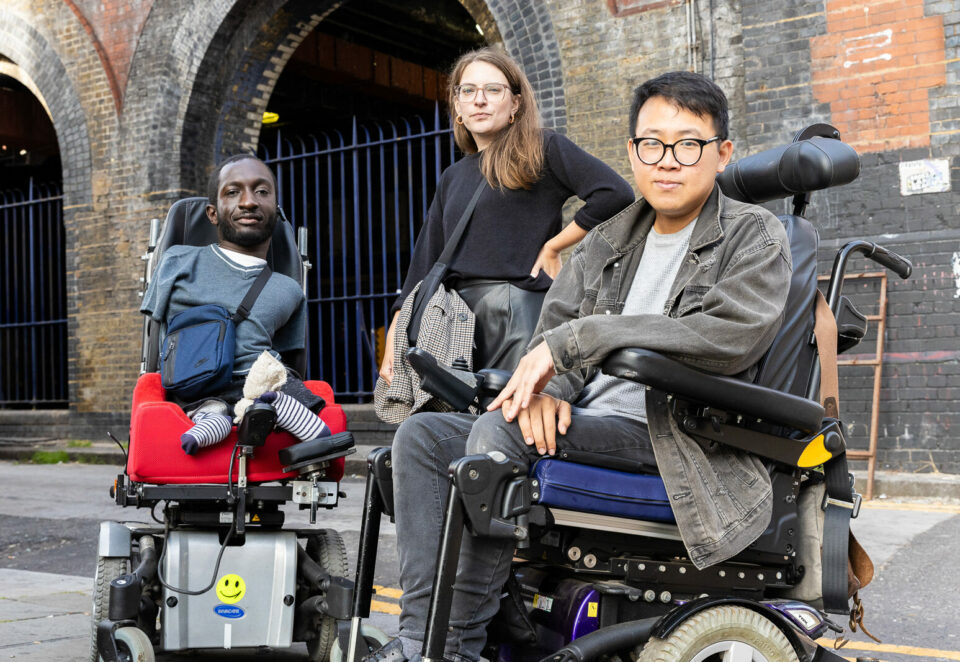
Campaign victory: Plans to close rail ticket offices are officially scrapped
We're celebrating a major victory today, as proposals to close hundreds of rail ticket offices are officially scrapped.
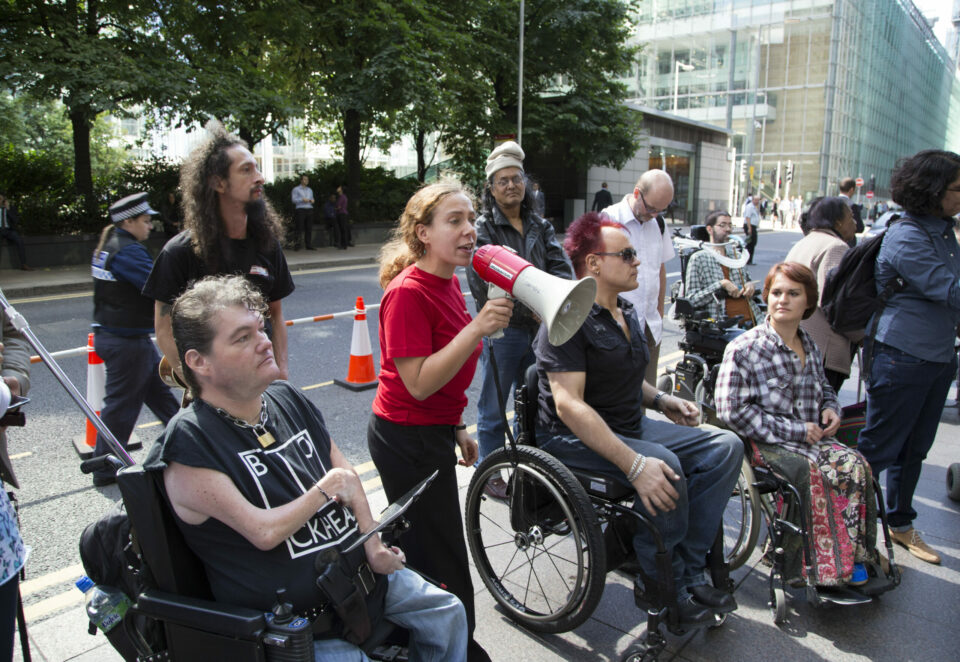
Celebrating the disabled activists who campaigned for an accessible Elizabeth Line
As Crossrail opens today, disability charity, Transport for All, pays tribute to the efforts of the 2013 campaigners.

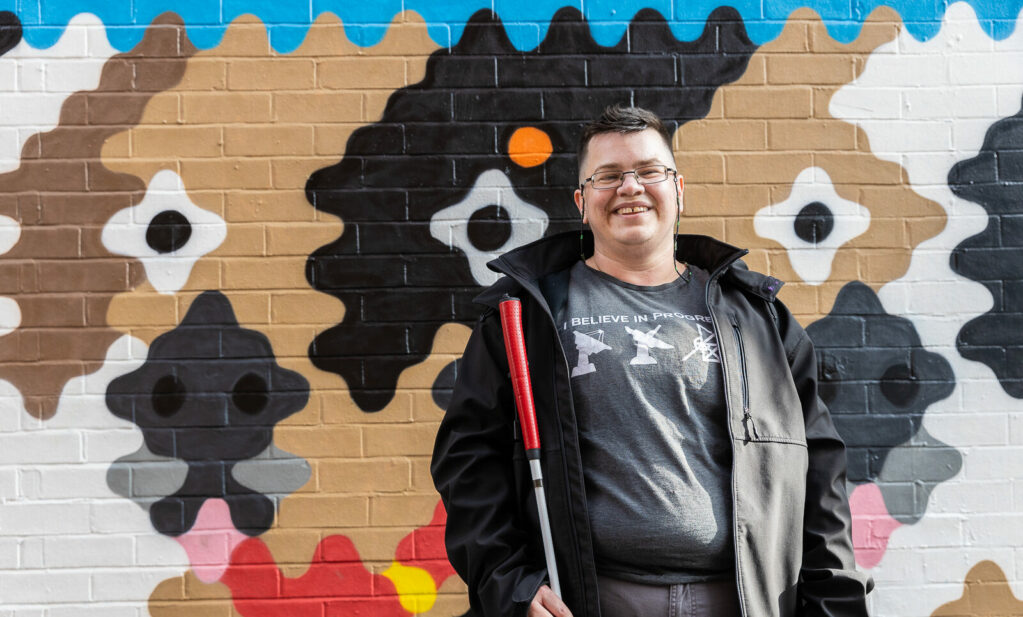
Support us
We can't do this without your support. Take action, give what you can, or sign up as a member - and join our movement of disabled people fighting for a better future.
